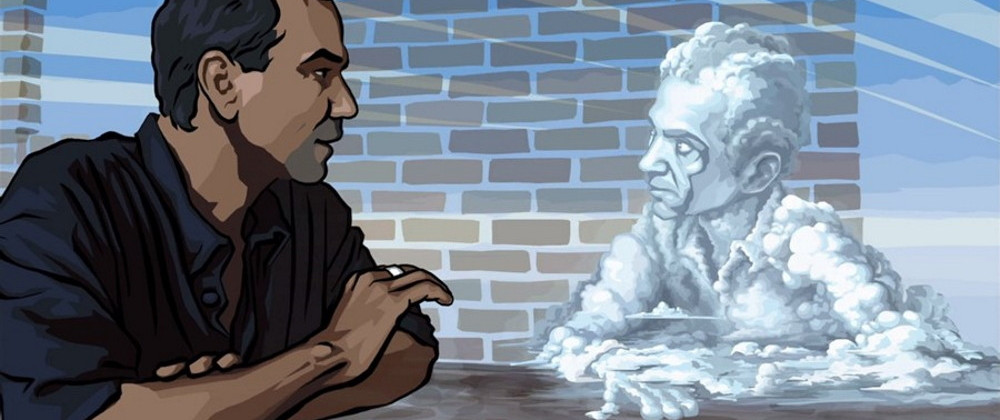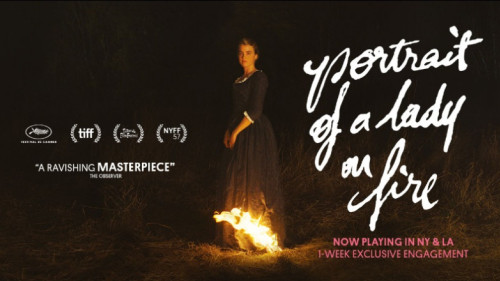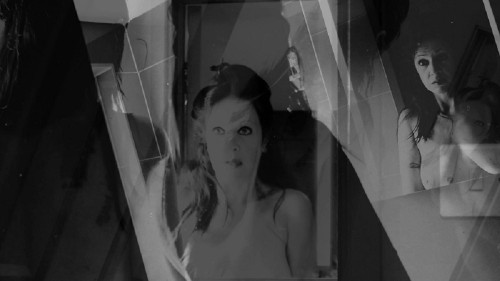Volume 26, Issue 1-2 / January–February 2022
Cinema and the Other Arts
In this issue
-
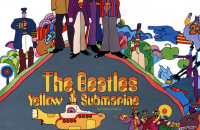
A Deep Dive in a Yellow Submarine
Some Notes on the Filmmakers and References in the Classic Animated Feature
-

On Adding Dimensions: A Long-Overdue Conversation With Waking Life’s Tech Wizard, Bob Sabiston
-

The Dialectics of Dance
Levan Akin’s 2019 film And Then We Danced
-
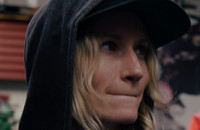
An Interview with Gritt director Itonje Søimer Guttormsen
The cost of standing out in modern-day Scandinavia
-
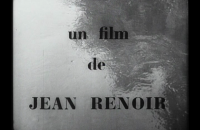
In His Father’s Steps: Jean Renoir’s Evolving Relationship with Impressionism in Partie de campagne and Le déjeuner sur l’herbe
-

“Meet Me in Montauk”: Michel Gondry’s Incorporation of Avant-Garde Surrealist Practices in Eternal Sunshine of the Spotless Mind (2004)
-

Transgressing the Frame: Onscreen Art Between Form and Formlessness
-

Time-Ghost: Art After Andy The Biography of Andy Warhol by Blake Gopnik
-
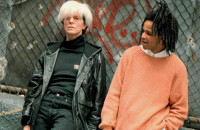
The Cost of Transcendence: Painter-Filmmaker Julian Schnabel, Mark Rothko, and the Art Market
-
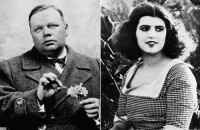
Stars in Red and Gold: The American Myth Recuperated in American Vampire (2010)
-

Addio Monica: A Tribute to Monica Vitti
Monica Vitti: RIP (1931-Feb 2, 2022)
This is an issue I have always wanted to do and the wait has led to this special double length issue on the many different ways cinema interacts with the other art forms. I thank my contributors for the breadth of subjects which has allowed for such a variety of art forms to make themselves felt; from painting to music to animation to comic books to dance to performance art. The first art to be considered is that of animation with two articles far removed from Disney or Pixar. David Hanley looks at the far ranging influences behind the animation style of The Yellow Submarine (Pop Art, comics, surrealism, art nouveau, silent cinema, classic Hollywood, etc.). Tim Brinkhof interviews Bob Sabiston about his groundbreaking rotoscoping animation techniques used for Richard Linkletter’s Waking Life and A Scanner Darkly. George Kowalik looks at the Swedish/Georgian dance film And Then We Danced (2019), a film which stoked controversy in Georgia by foregrounding the homosexuality of one of its central characters. Kowalik argues that the film “invigorates and modernises the narrative application of dance, using a rulebook steeped in history and tradition to discuss identity, authenticity, personal truth….” Tim Brinkhof contributes a second article which also looks at the political context of art, which he discusses with the director of Gritt, Itonje Søimer Guttormsen. Gritt is a fascinating study of a strong-willed socially committed performance artist who is pushed (or pushes herself) to the fringes of the Norwegian art community. David Hanley also contributes two articles, the second a study of the influences of Impressionism on Jean Renoir. While Sierra Lapointe follows this up with a similar look at art style influences, in this case how Michel Gondry incorporates elements of Surrealist art practice into his own unique filmmaking style in The Eternal Sunshine of the Spotless Mind (2004). The place of the museum and/or art gallery is the subject (in a broad sense) of the essay, “Transgressing the Frame: Onscreen Art Between Form and Formlessness” by Emmalea Russo. Russo groups together three films that narratively dissolve the boundary between the self-contained world represented in art and the surrounding reality beyond the frame (Candyman, 2021, Velvet Buzzsaw, and The Stendhal Syndrome). The sometimes reified world of art informs the next two pieces. Donald Brackett reviews Blake Gopnik’s biography of Andy Warhol, an artist who perhaps brought together his artistic ideas to both painting and cinema better than any other painter/filmmaker. Another painter/filmmaker, Julian Schnabel, is the subject of Daniel Garrett’s article, which looks at the Schnabel’s fluid transitioning between film and painting, two quite different art forms, but both sharing and being shaped by, to varying degree, monetary value. Garrett discusses the art and value of earlier artists Cezanne, Van Gogh, Rothko and Picasso. And while Schnabel cannot yet match the historical art value of Van Gogh or Cezanne, his art has brought him monetary success during his lifetime, unlike Van Gogh, who died a poor man. The value of art is multi-faceted and multi-purposed. Foremost perhaps is the value as seen by the artist, who creates with a particular goal or vision in mind, like Cezanne’s goal of making form –light, shadow, shape- the subject of his canvas and not the tree or river or mountain. The value of art in a lifetime may or may not equate with the historical value attained long after the artist dies, the legacy; art is also a commodity, as we see in the documentary Garrett discusses which reveals the workings of the art market, The Next Big Thing. And the value of art can also to evoke a spiritual emotion, as Garrett notes in the case of Mark Rothko. And not to be forgotten, art can entertain as well as enlighten, distract us from our problems, as well as remind us of them. The potential for social commentary in popular art form is reflected in Justin Langlois’ thematic analysis of the comic book American Vampire, Volume 1, by Scott Snyder and Stephen King. Snyder and King renew the European mythology of the vampire into a uniquely American context by using the vampire myth as a metaphor for the exploitation of women in early Hollywood (the ‘extra girl’, whose exploitation came to its grisliest formation in the tragic Hollywood Arbuckle/Rappe scandal). I could not let the death of an actress who meant so much to me, Monica Vitti, go without some murmur of the heart. So in the spirit of this issue’s theme, I teamed Vitti up with the music of the wonderful Italian singer Mina. Not only were Mina and Vitti contemporaries who both exuded a cool, sexy and confident brand of Euro-modernity, but I always thought they looked so much alike they could pass for sisters. The issue concludes with my humble audio-visual tribute to the great Monica Vitti. Enjoy. (Donato Totaro, ed.)

